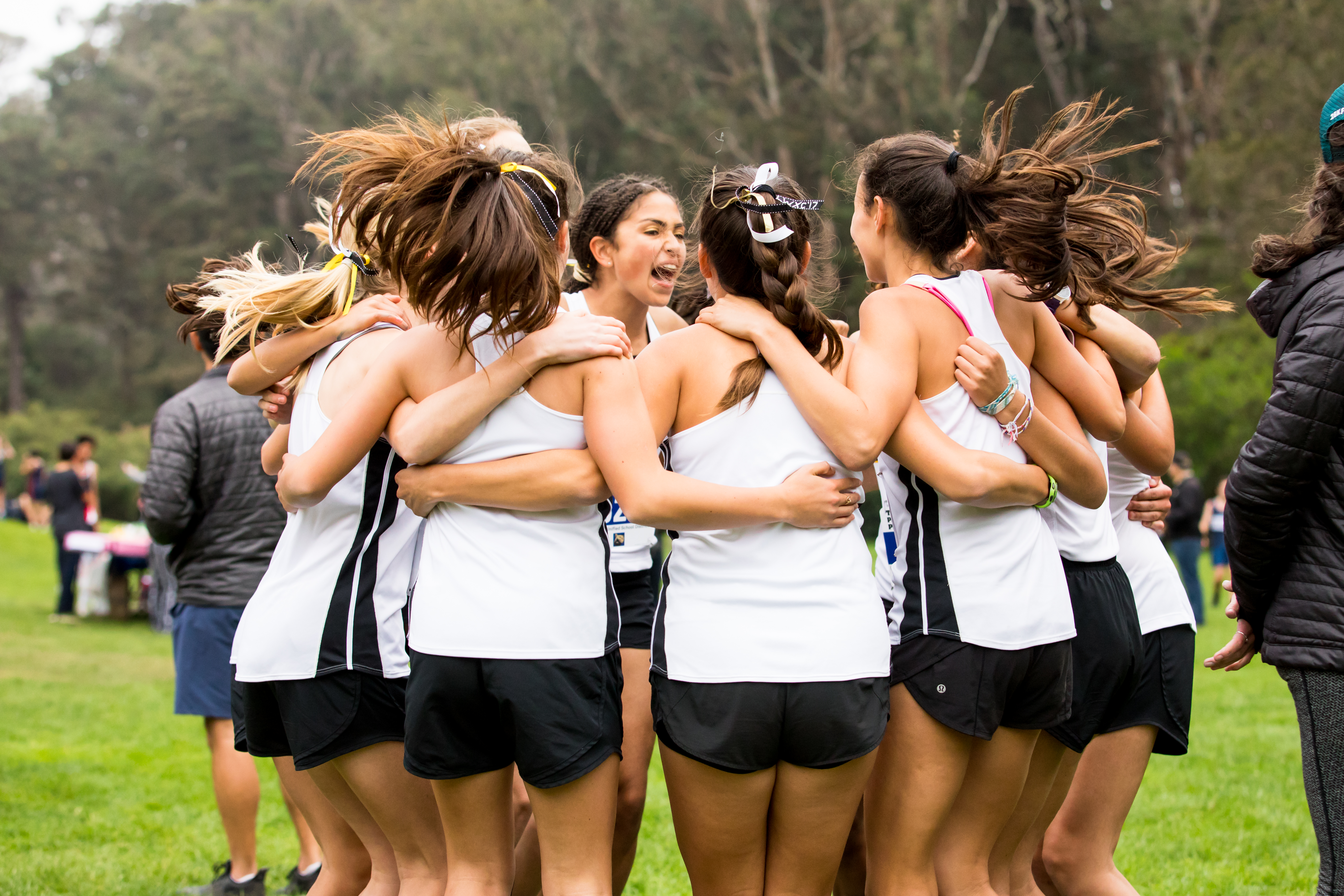It is no secret that students at rigorous institutions like Lick experience academic stress. Less obvious, however, is that those same anxieties often appear in athletics. Performance anxiety is especially apparent in sports like track and field, where the onus is on a single person to succeed — or fail.
Joe Fleming has been coaching track and field at Lick for over a decade and watched many of his athletes emotionally crumble as a result of performance anxiety. The shorter events are particularly mentally taxing. “In a sprint, you’ve got 12 seconds,… [you] run under the scrutiny of the fans, your teammates and everybody else,” Fleming said.
At the beginning of the 2019 track season, Lick’s sprint program committed to reaching beyond physical workouts to support its athletes. Fleming designed a mental conditioning program that is now implemented into training and racing. In the opening weeks of the season, track athletes were coached through techniques like visualization, meditation, and deep breathing to help them manage the emotional side of the sport.
It is no secret that expectations to perform at a high level — both in the classroom and on the court — can amplify students’ stress at rigorous institutions like Lick. Highly motivated students are often ambitious, competitive, and achievement-oriented, which contributes to their academic and athletic success. But unbridled drive can often lead to constant feelings of inadequacy and a pressure to succeed.
Daniel Tesfai, BME teacher and Lick Varsity Women’s Basketball coach, acknowledged how difficult it can be to maintain athletic performance on top of an overwhelming workload. He attributed part of the stress to the high, unwavering expectations that students face.
“[Lick’s atmosphere] is high-achieving in itself,” Tesfai said. “The kids that are coming in are pretty successful in one way or another…It can carry over physically and mentally for students, where they feel like they’re overwhelmed academically.”
Another source of pressure for students is often their parents. The common eagerness to see one’s child succeed can turn into overbearing expectations, even when they aren’t explicitly articulated. Fleming has seen one of his own athletes suffer from their parents’ high expectations — and eventually choke under the pressure. “It can incapacitate some athletes, paralysis almost,” he said. “You begin to have an erosion of confidence in something that you enjoy doing.”
Oftentimes the most intense pressure comes from an athlete’s intrinsic expectations. Zoe Fu-Chen ’20, who has been running track for three years, said the stress she feels to beat her personal records can be overwhelming. She explained that because of this anxiety, her athletic performance often impacts her personal life.
“The week before meets I’d start getting stressed and I couldn’t sleep. I’m sure that didn’t help my racing, but I couldn’t not get stressed,” she said. “And then the day of, I’d be really stressed and I couldn’t eat.”
Ashley Relf, a sports psychologist and former Lick cross-country coach, has noticed a similar pattern in her teenage athletes. Relf — who runs a mental-strength coaching service called Train Compete Get Faster — said that her teenage clients are often more focused on perfection than the training process, a mentality that leaves them unequipped to deal with performance anxiety.
“I think a lot of athletes don’t have the right skills and tools to combat and deal with those emotions and those feelings and those anxieties and those pressure,” Relf said. “They aren’t equipped, so they have to experience them. And a lot of times it implodes. It ruins their performance, or they drop out of the sport or burn out because they aren’t enjoying it.”
After years of coaching students unprepared to deal with their stress, Fleming’s new program aims to provide athletes with tools to mitigate anxiety.
One of the key techniques that Fleming teaches to Lick athletes is visualization. He encourages athletes to close their eyes, take deep breaths, and imagine themselves on the starting block. The more details they can picture, Fleming added, the more useful this technique will be. The control they feel in their imagination is meant to give them confidence in their ability to succeed: if they can visualize personal achievement while also controlling their anxiety, they can learn to manage stress in real-life situations.
“If they have confidence in the fundamentals and what the game-plan might be, then I say, ‘Whatever happens, happens,’” Fleming said. “And usually if you prepare athletes that way, ultimately you get a better result.”
Fleming has used visualization since his time as a Navy fighter pilot. While he was usually at the top of his class, during biannual simulation checks — training flights under heavy instructor scrutiny— he often performed worse than in real life. After a friend suggested that he visualize himself doing the simulation while keeping calm, his performance improved enormously. Fleming began to recommend the technique to his fellow pilots, and then later to his young athletes when coaching track.
Relf reaffirmed the power of visualization, especially as a way to regain control over one’s performance. “I believe in doing the mental piece while you are doing the physical piece. When you separate them too much it is hard to put them together when you need to,” Relf said. “When we are doing hill repeats, for example, I will have [athletes] visualize the course we are going to race on, the thoughts they will have, and how to reframe those thoughts to make them more conducive to performance.”
After only a couple months since the beginning of Fleming’s program, Franny Nakada ’22, a sprinter on the Lick Track and Field team, has already felt the program’s positive impact: “At first I questioned it, since I didn’t think just visualizing a start or a meet could help improve your time,” Nakada said. “But at my first meet, I found that the visualization had helped me calm down and focus because of how familiar it felt to me. [The techniques have] definitely helped me during my first track season.”
Another way Fleming’s program aims to mitigate anxiety is to establish a supportive environment that makes track feel more like a team sport. To take pressure off each individual, Fleming encourages athletes to develop strong bonds. “The relationships are important,” he said, “because it just makes you feel like you aren’t walking alone.” A vital aspect of these connections is encouragement: when students support each other, their positive energy can bring them closer together, ultimately improving their athletic performance.
“I’m going to affirm you, and you’re going to affirm the other people so that you develop these relationships,” Fleming said. “So all of a sudden we have this cohesive unit, and it takes the pressure off a single performance.”
Relf emphasized the importance of a team environment. As a coach, she tries to build a culture where everyone understands and respects each others’ different needs when preparing for a race. She tries to minimize the stigma around mental health.
“Normalizing anxiety and performance anxiety is my goal, to let people know that everyone is dealing with something different and that this is normal, but it’s okay to change that,” Relf said. “Just because it is normal doesn’t mean you have to stay anxious and uncomfortable forever.”







